The endoplasmic reticulum stress-mediated unfolded protein response protects against infection of goat endometrial epithelial cells by Trueperella pyogenes via autophagy
- PMID: 34967271
- PMCID: PMC9794013
- DOI: 10.1080/21505594.2021.2021630
The endoplasmic reticulum stress-mediated unfolded protein response protects against infection of goat endometrial epithelial cells by Trueperella pyogenes via autophagy
Abstract
Trueperella pyogenes is an important bacterial pathogen of a wide range of domestic and wild animals. Autophagy plays a key role in eliminating T. pyogenes in a process that is dependent on mechanistic target of rapamycin (mTOR). The endoplasmic reticulum (ER) stress response also is critical for autophagy regulation. However, the relationship between ER stress and T. pyogenes is uncharacterized and the intracellular survival mechanisms of T. pyogenes have not been investigated adequately. In this study, we show that T. pyogenes invades goat endometrial epithelial cells (gEECs). Meanwhile, we observed that GRP78 was upregulated significantly, and that unfolded protein response (UPR) also were activated after infection. Additionally, treatment with activators and inhibitors of ER stress downregulated and upregulated, respectively, intracellular survival of T. pyogenes. Blocking the three arms of the UPR pathway separately enhanced T. pyogenes survival and inflammatory reaction to different levels. We also show that LC3-labeled autophagosomes formed around the invading T. pyogenes and that autolysosome-like vesicles were visible in gEECs using transmission electron microscopy. Moreover, tunicamycin did not inhibit the intracellular survival of T. pyogenes under conditions in which autophagy was blocked. Finally, severe challenge with T. pyogenes induced host cell apoptosis which also may indicate a role for ER stress in the infection response. In summary, we demonstrate here that ER stress and UPR are novel modulators of autophagy that inhibit T. pyogenes intracellular survival in gEECs, which has the potential to be developed as an effective therapeutic target in T. pyogenes infectious disease.
Keywords: Trueperella pyogenes; autophagy; endoplasmic reticulum stress; intracellular survival; unfolded protein response.
Conflict of interest statement
No potential conflict of interest was reported by the author(s).
Figures
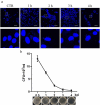
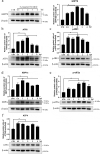
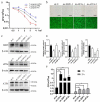
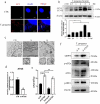
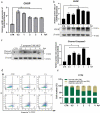



Similar articles
-
The endoplasmic reticulum stress induced by tunicamycin affects the viability and autophagy activity of chondrocytes.J Clin Lab Anal. 2020 Oct;34(10):e23437. doi: 10.1002/jcla.23437. Epub 2020 Jun 26. J Clin Lab Anal. 2020. PMID: 32592208 Free PMC article.
-
Staphylococcus aureus Induces Goat Endometrial Epithelial Cells Apoptosis via the Autophagy and Endoplasmic Reticulum Stress Pathway.Animals (Basel). 2022 Mar 11;12(6):711. doi: 10.3390/ani12060711. Animals (Basel). 2022. PMID: 35327108 Free PMC article.
-
Excessive ER-phagy mediated by the autophagy receptor FAM134B results in ER stress, the unfolded protein response, and cell death in HeLa cells.J Biol Chem. 2019 Dec 27;294(52):20009-20023. doi: 10.1074/jbc.RA119.008709. Epub 2019 Nov 20. J Biol Chem. 2019. PMID: 31748416 Free PMC article.
-
Oncogenic BRAF, endoplasmic reticulum stress, and autophagy: Crosstalk and therapeutic targets in cutaneous melanoma.Mutat Res Rev Mutat Res. 2020 Jul-Sep;785:108321. doi: 10.1016/j.mrrev.2020.108321. Epub 2020 Jul 7. Mutat Res Rev Mutat Res. 2020. PMID: 32800272 Review.
-
Endoplasmic Reticulum Stress and Unfolded Protein Response in Breast Cancer: The Balance between Apoptosis and Autophagy and Its Role in Drug Resistance.Int J Mol Sci. 2019 Feb 16;20(4):857. doi: 10.3390/ijms20040857. Int J Mol Sci. 2019. PMID: 30781465 Free PMC article. Review.
Cited by
-
Autophagy Alters the Susceptibility of Candida albicans Biofilms to Antifungal Agents.Microorganisms. 2023 Aug 5;11(8):2015. doi: 10.3390/microorganisms11082015. Microorganisms. 2023. PMID: 37630575 Free PMC article.
-
Insights into Exosome in the Intervertebral Disc: Emerging Role for Disc Homeostasis and Normal Function.Int J Med Sci. 2022 Sep 25;19(11):1695-1705. doi: 10.7150/ijms.75285. eCollection 2022. Int J Med Sci. 2022. PMID: 36237988 Free PMC article. Review.
References
-
- Jost BH, Billington SJ.. Arcanobacterium pyogenes: molecular pathogenesis of an animal opportunist. Antonie Van Leeuwenhoek. 2005;88(2):87–102. - PubMed
-
- Narayanan S, Nagaraja TG, Wallace N, et al. Biochemical and ribotypic comparison of Actinomyces pyogenes and A pyogenes-like organisms from liver abscesses, ruminal wall, and ruminal contents of cattle. Am J Vet Res. 1998;59(3):271–276. - PubMed
-
- Jost BH, Post KW, Songer JG, et al. Isolation of Arcanobacterium pyogenes from the porcine gastric mucosa. Vet Res Commun. 2002;26(6):419–425. - PubMed
-
- Ashrafi Tamai I, Mohammadzadeh A, Zahraei Salehi T, et al. Genomic characterisation, detection of genes encoding virulence factors and evaluation of antibiotic resistance of Trueperella pyogenes isolated from cattle with clinical metritis. Antonie Van Leeuwenhoek. 2018;111(12):2441–2453. - PubMed
-
- van Engelen E, Dijkstra T, Meertens NM, et al. Bacterial flora associated with udder cleft dermatitis in Dutch dairy cows. J Dairy Sci. 2020;104(1):728–735. - PubMed
Publication types
MeSH terms
Grants and funding
LinkOut - more resources
Full Text Sources
Miscellaneous
